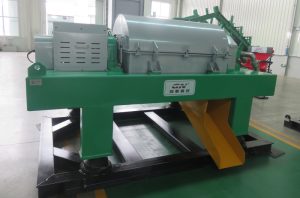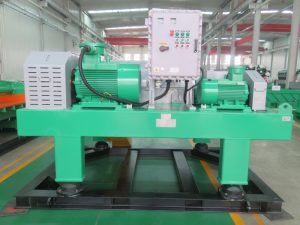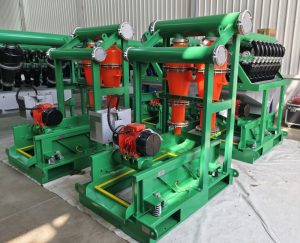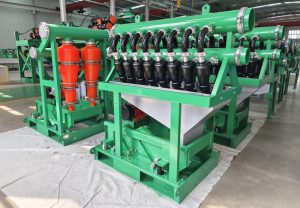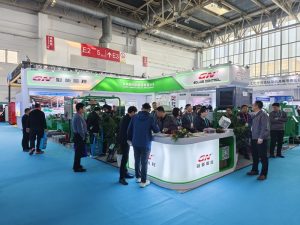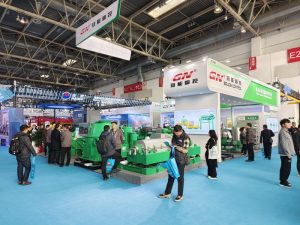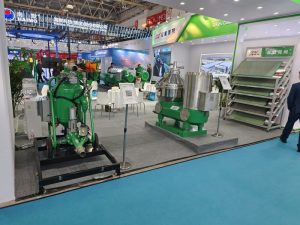In the realm of drilling operations, efficient solid-liquid separation is of paramount importance, and the desander and desilter centrifuge machine has emerged as a revolutionary solution. This cutting-edge technology not only enhances drilling efficiency but also contributes to cost reduction and environmental sustainability.
Desander and desilter centrifuge machine is a highly efficient solid-liquid separation device specifically designed for the removal of sand particles and mud from drilling fluids. It operates on the principle of centrifugal force, where a large drum-shaped centrifuge, along with a helical conveying element, facilitates the separation of solid particles. As the centrifuge rotates, the force generated pushes the heavier solids towards the outer wall, while the lighter drilling fluid flows out through the center, ensuring a clean and stable drilling environment.
What sets the desander and desilter centrifuge machine apart from its predecessors is its ability to combine both sand and mud removal functions in a single unit. This innovative design, incorporating separate centrifugal mechanisms for sand and mud separation connected by a spacing pipe, allows for continuous and effective treatment of drilling fluids, significantly enhancing the solids control’s results while minimizing operating costs.
The latest iterations of these machines, such as the GN series and GNZJ series mud cleaners from companies like GuanNeng Solid Control, feature advanced designs like high-G force variable trajectory vibratory screens and elongated conical cyclones. These enhancements allow for the separation of finer and drier materials, potentially reducing the reliance on conventional sand separators or additional centrifuges. The compact design of these machines makes them ideal for use as secondary or tertiary solids control equipment in drilling mud systems, occupying minimal space while delivering exceptional performance.
The architecture of a centrifugal sand and mud removal integrated machine typically consists of core sleeves, filter cylinders, and drive mechanisms. For instance, some designs feature filter cylinders nestled within core sleeves, connected to a drive mechanism via a connecting shaft. The drive mechanism may incorporate an electric motor and pulleys, utilizing a belt传动 to induce centrifugal rotation. The connecting shaft, often hollow, facilitates the input and output of drilling fluids. Additionally, these designs often include sealing sleeve 、sand pump 、sludge pump components for easy maintenance and cleaning, ensuring the uninterrupted and efficient operation of the device.
Industry reports, such as the “2024-2030 China Centrifugal Pump Industry Market Status Analysis and Market Prospects Assessment Report,” indicate a robust growth in the centrifugal pump market, largely driven by the extensive application and technological advancements of centrifugal sand and mud removal integrated machines in drilling operations. As drilling efficiency and environmental concerns become increasingly pressing, the market outlook for these devices remains promising.
The desander and desilter centrifuge machine boasts several performance advantages, including a wide separation particle size range, high throughput capacity, compact design, and ease of operation. These attributes make it an ideal choice for applications in the oil and gas industry, geological exploration, and other sectors that demand rigorous solid-liquid separation. Although initial investment might be higher compared to traditional systems, the long-term economic benefits stemming from their high efficiency and durability often justify the cost.
In summary, the desander and desilter centrifuge machine is an indispensable component in drilling operations. Its exceptional performance, multifunctionality, and compact design enable efficient drilling in complex geological formations and superior drilling fluid management. As technology continues to evolve and market demand grows, these devices are poised to undergo further optimization, adapting to more challenging work environments and higher production efficiency requirements. Thus, the future of the centrifugal sand and mud removal integrated machine is bright, promising to redefine the landscape of drilling operations and solid-liquid separation technology.
